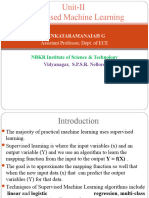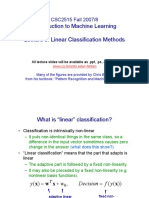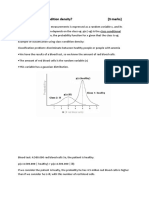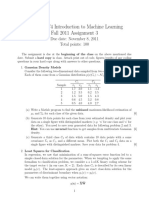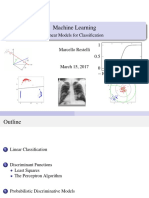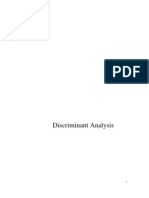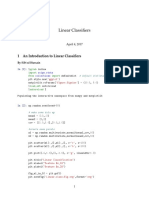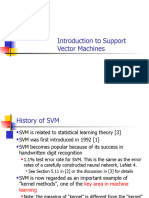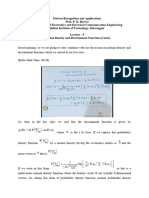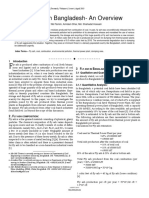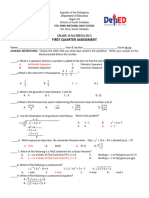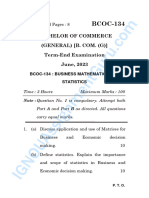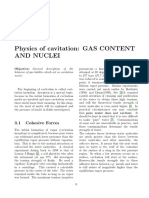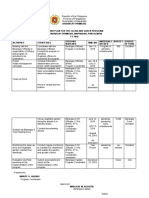0% found this document useful (0 votes)
66 views72 pagesLinear Models for Classification
The document introduces linear models for classification problems. It discusses how linear classifiers use hyperplanes to separate classes and define decision boundaries in a feature space. It then covers three representative linear classifiers - linear discriminant analysis, logistic regression, and support vector machines. The document focuses on the linear discriminant analysis approach, explaining how it finds the optimal linear decision boundary to maximize separation between classes.
Uploaded by
howgibaaCopyright
© © All Rights Reserved
We take content rights seriously. If you suspect this is your content, claim it here.
Available Formats
Download as PDF, TXT or read online on Scribd
0% found this document useful (0 votes)
66 views72 pagesLinear Models for Classification
The document introduces linear models for classification problems. It discusses how linear classifiers use hyperplanes to separate classes and define decision boundaries in a feature space. It then covers three representative linear classifiers - linear discriminant analysis, logistic regression, and support vector machines. The document focuses on the linear discriminant analysis approach, explaining how it finds the optimal linear decision boundary to maximize separation between classes.
Uploaded by
howgibaaCopyright
© © All Rights Reserved
We take content rights seriously. If you suspect this is your content, claim it here.
Available Formats
Download as PDF, TXT or read online on Scribd
/ 72
